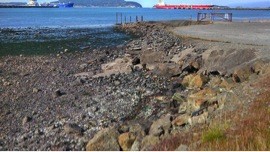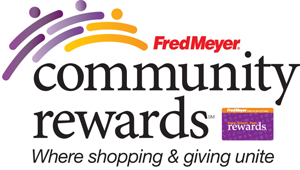Science and Monitoring of Fidalgo Bay
By Trail Tales Volunteer Coordinator Nancy Olsen
“It takes a village” to restore and protect the Salish Sea and our Skagit shorelines. The Trail Tales program is part of that village for sure, engaging citizens in enjoyable learning activities. But education and outreach must be based on solid science, and monitoring data integrated in the science is important to successful conservation and restoration efforts as well. So, in order to continually update the Trail Tales volunteers with accurate information (and because I am a science-biology nut, anyway!) I shared in the October workshop with many of the teams involved in science and monitoring projects in Fidalgo Bay. Organized by the Skagit Marine Resources Committee and Northwest Straits Foundation staff, the 4-hour workshop held at the Fidalgo Bay RV Park had three main objectives:
- Clarify who is actively monitoring Fidalgo Bay and what questions are being answered;
- Understand what questions remain to be answered about the health of the nearshore* in Fidalgo Bay; and
- Identify how those questions could be answered in order to assist the process of determining the focus for future monitoring work.
This sharing is really vital to the forward progress we make in individual programs and collectively! I came away with new information, clarity and direction and I believe the scientists and committee leads did also. Here are a few of my “take-homes” from the meeting that will become integrated with Trail Tales trainings, programs and presentations:
1. Skagit County – specifically the Marine Resources Committee is taking a “big picture” approach to the science and monitoring projects for supporting restoration efforts. This meeting and process, as well as the outcomes from it will likely support efforts in other counties as well.
2. A lot of agencies, institutions and organizations are doing research and monitoring (see list below) and their monitoring is focused on the specifically identified gaps in knowledge necessary to conservation and restoration efforts.
3. There are a lot of gaps in knowledge! Scientists are looking at everything from establishing eelgrass beds, ocean acidity and effects on nanoplankton and other affected organisms in the foodchain, currents and sediment movement, reproduction of native oyster populations, sources of pollution from runoff, survival of forage fish and effectiveness of habitat restoration efforts, and many other gaps in information.
4. All of the research and monitoring efforts are greatly enhanced by the involvement of citizens – either directly through the assistance or lead monitoring activities, or through their involvement in the education and interpretation of the science.
5. Many dedicated researchers, administrators and citizens are making a difference in the quality of life for all in Fidalgo Bay! Below is a list of the various groups represented at the meeting.
I am looking forward to helping the Trail Tales program be an even stronger partner in the education component of the protection of Fidalgo Bay and the Salish Sea!
▪ WA Dept of Ecology in conjunction with restoration sites (former Custom Plywood Mill, Scott Mill, Seafarers’ Port, Cap Sante Marina, others;
▪ Puget Sound Restoration Fund (Skagit County, Taylor Shellfish, University of Washington, Pacific Lutheran University
▪ WA Dept of Health
▪ USGS
▪ Tesoro Refinery
▪ Samish Indian Nation
▪ WA Dept of Fish and Wildlife
▪ WA Dept of Natural Resources and
▪ Fidalgo Bay Aquatic Reserve Committee
▪ City of Anacortes
▪ Port of Anacortes
▪ University of Washington
▪ Private contractors
▪ Skagit Marine Resources Committee / Northwest Straits Foundation
▪ Skagit River System Cooperative
By accepting you will be accessing a service provided by a third-party external to https://skagitbeaches.org/



